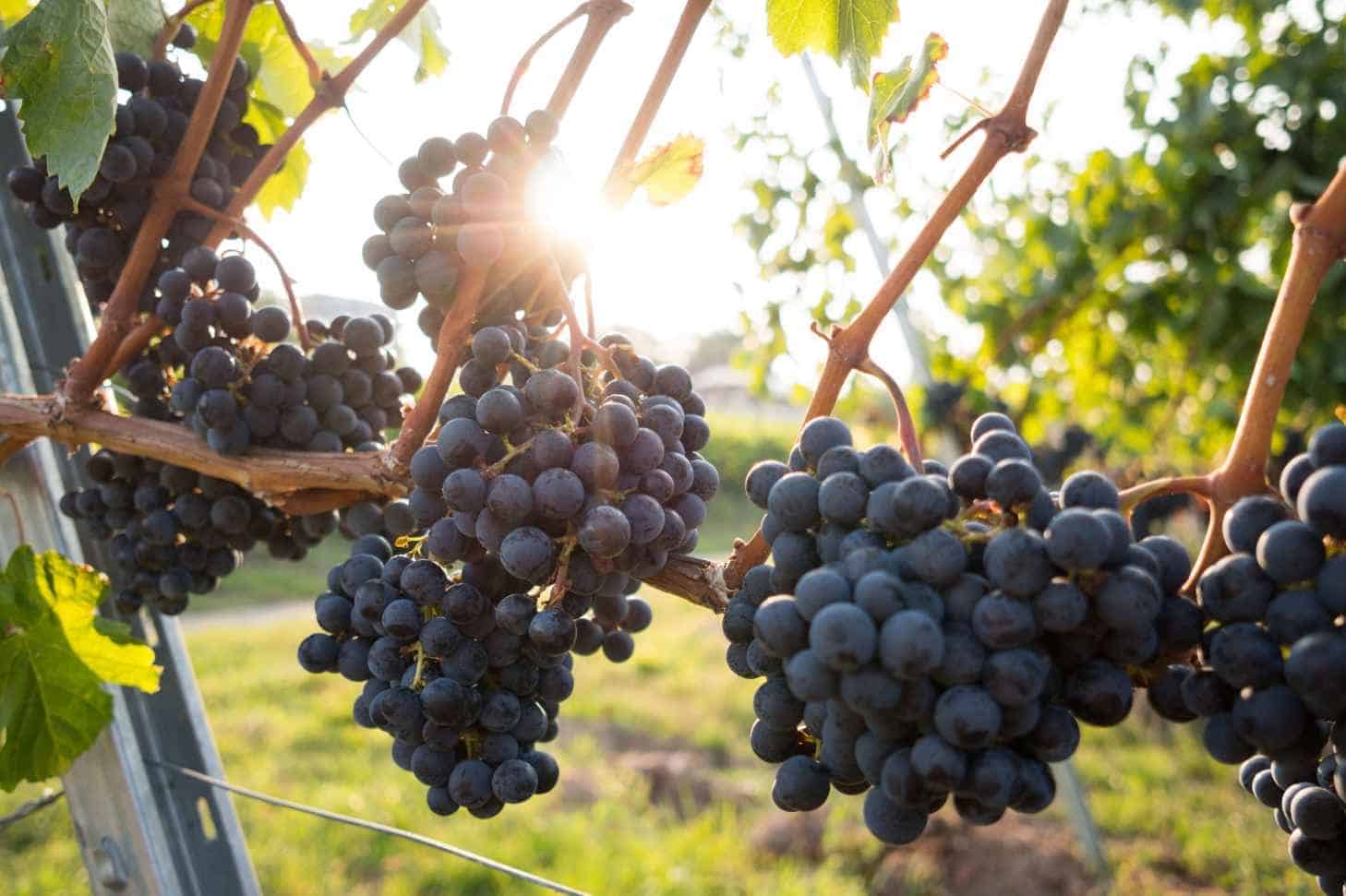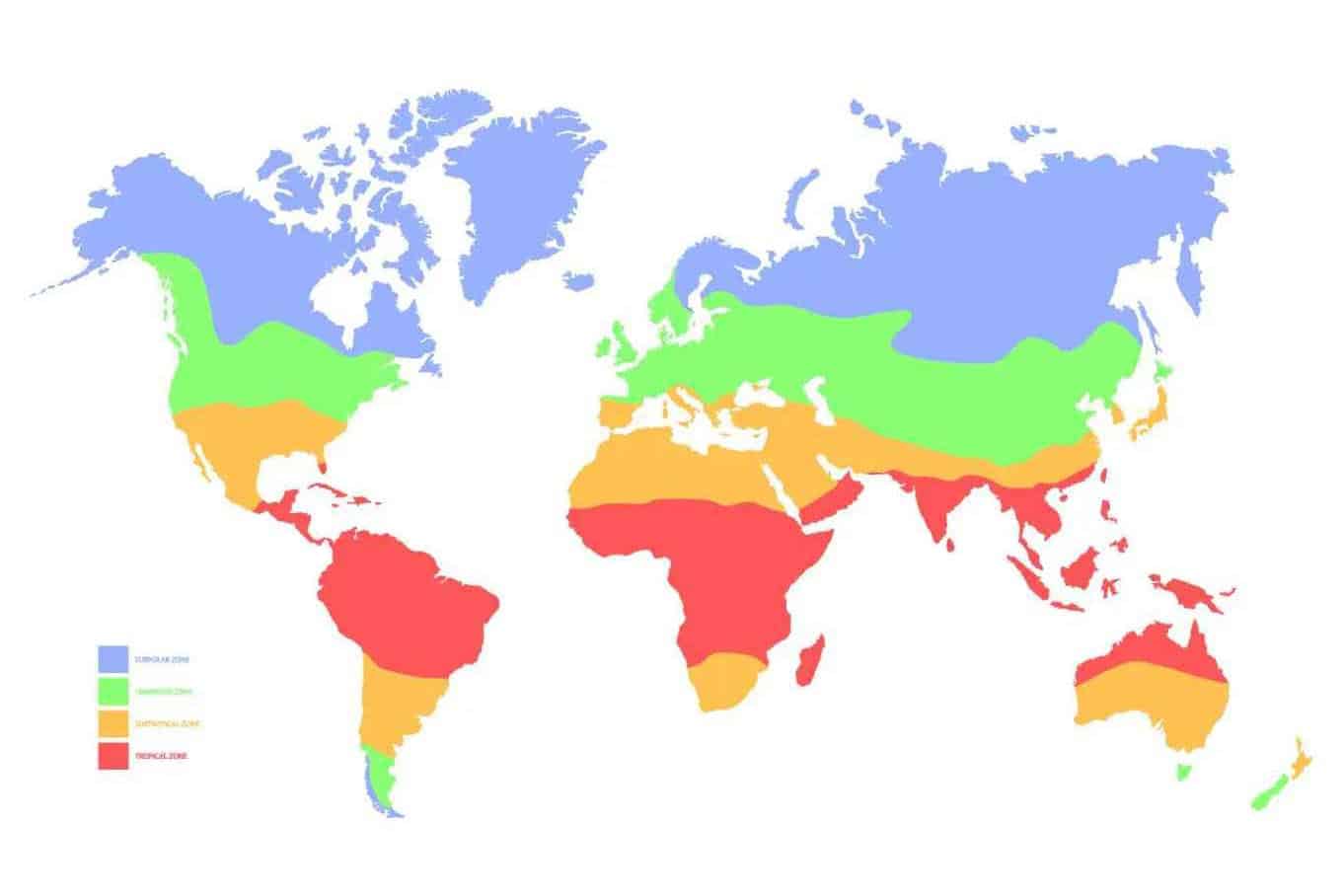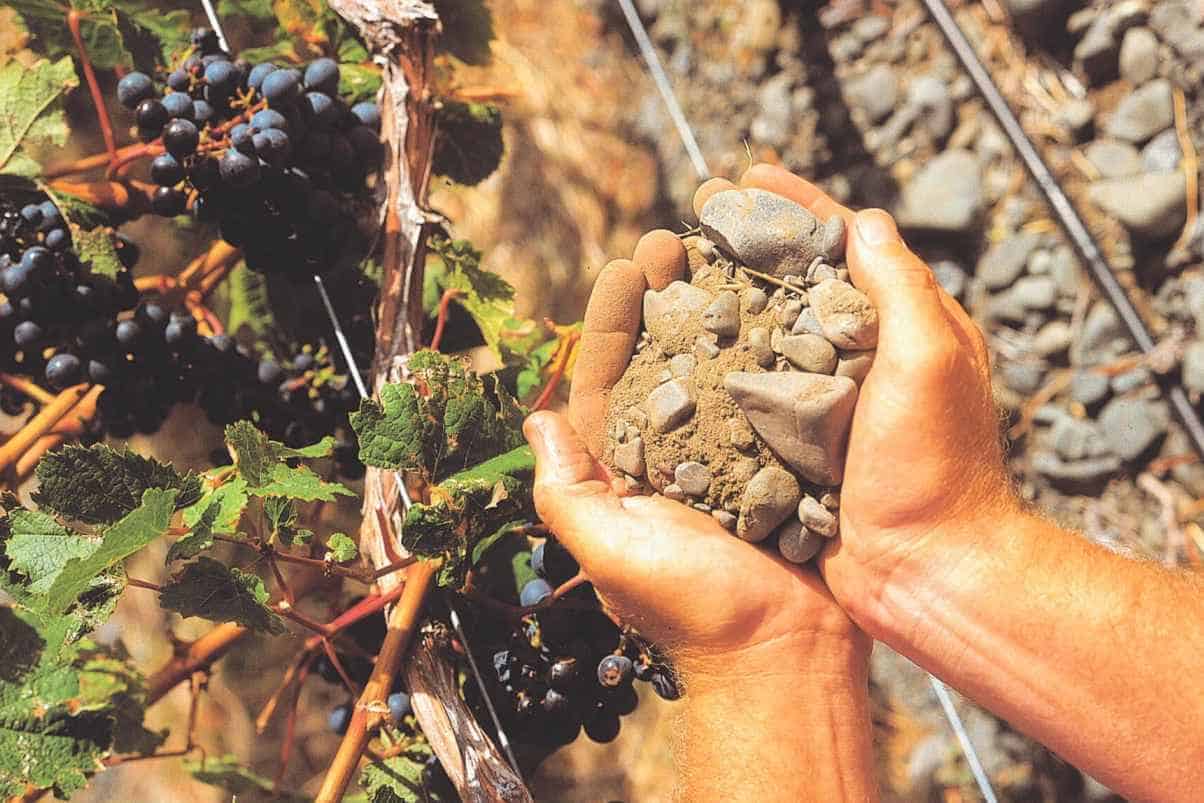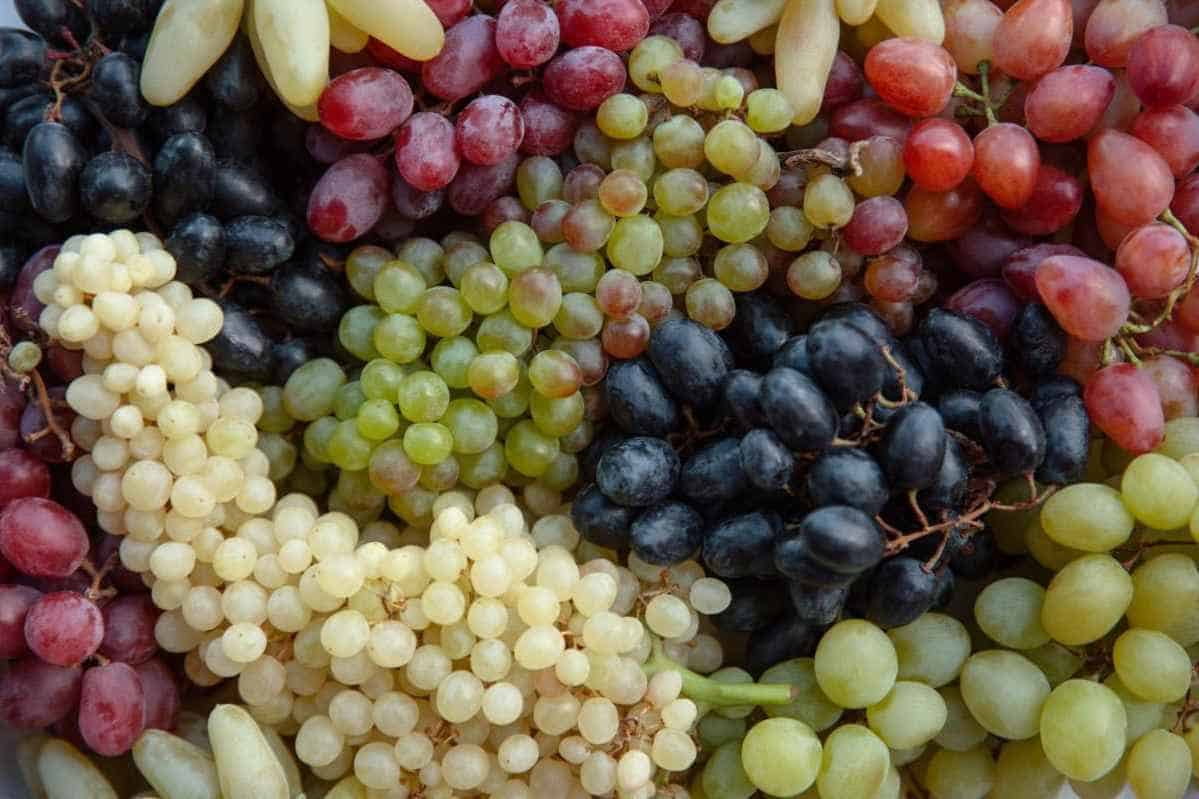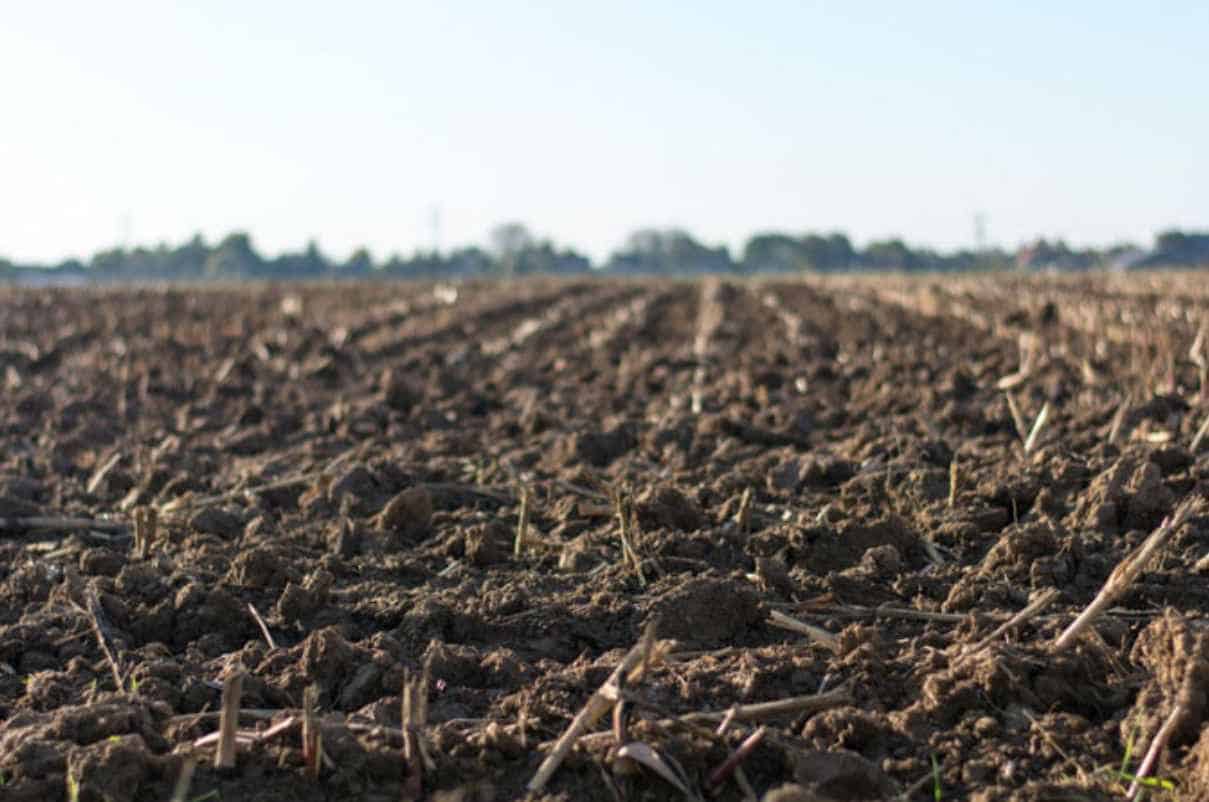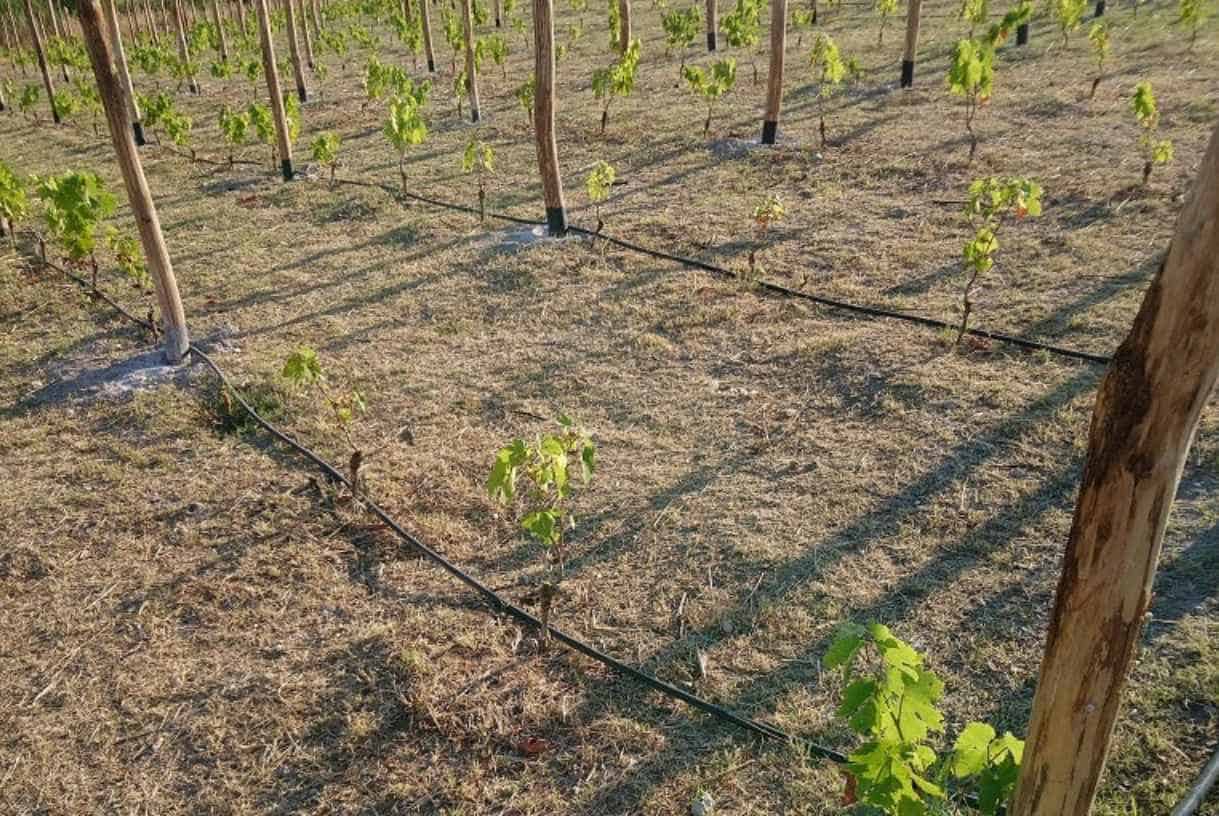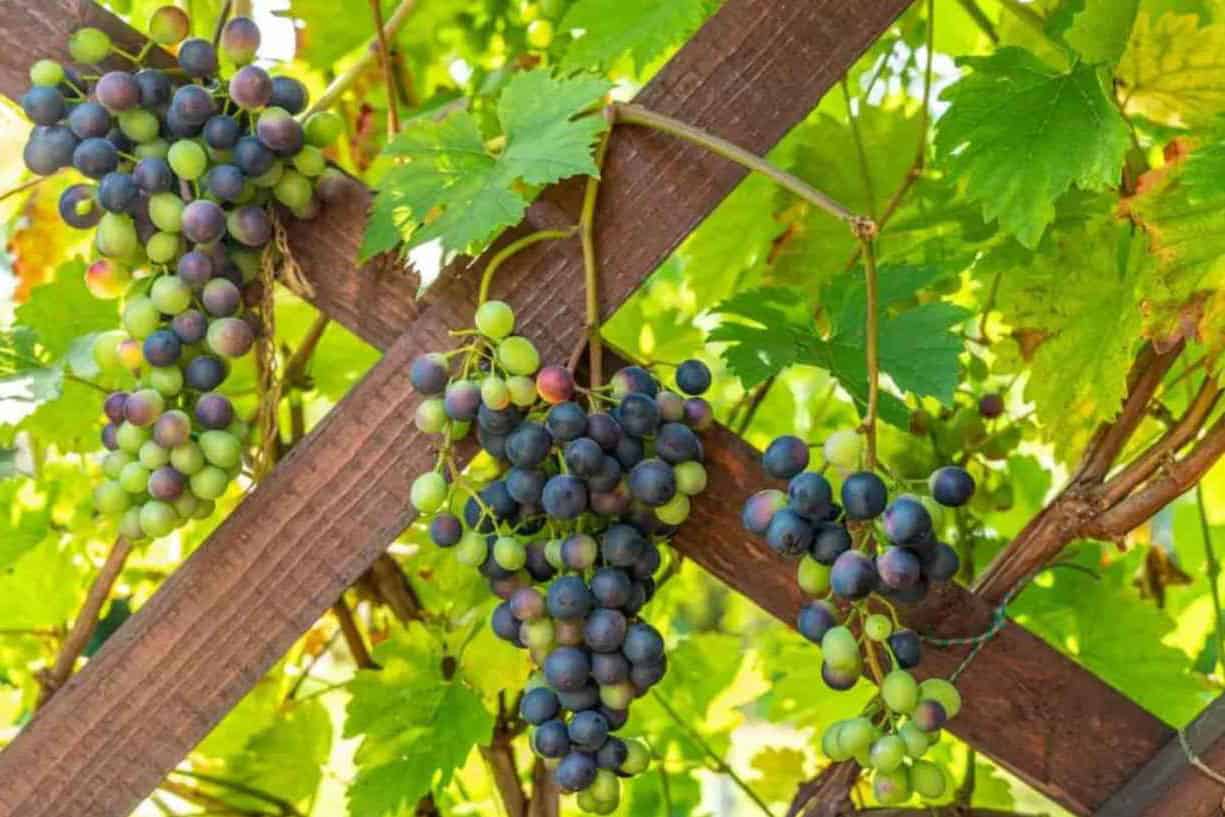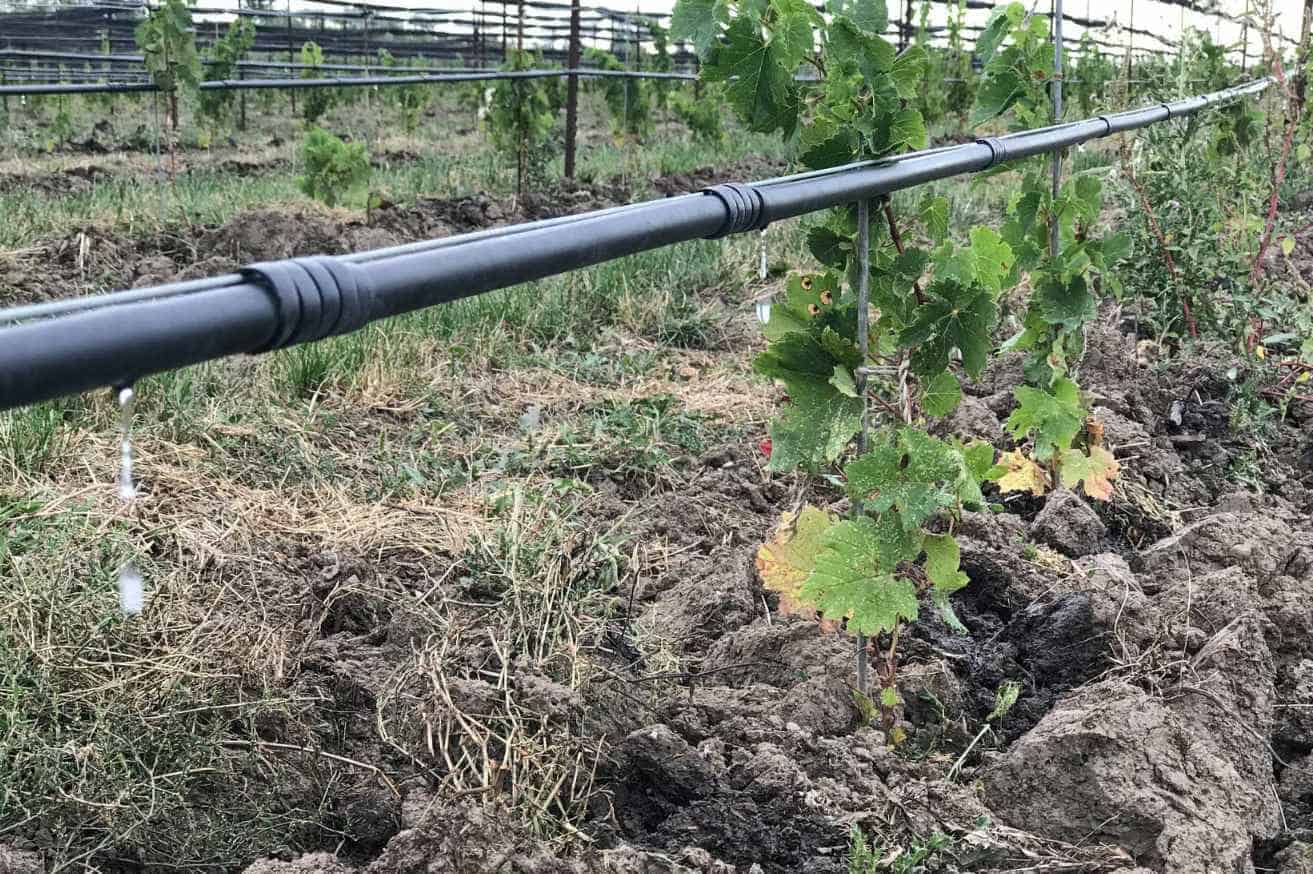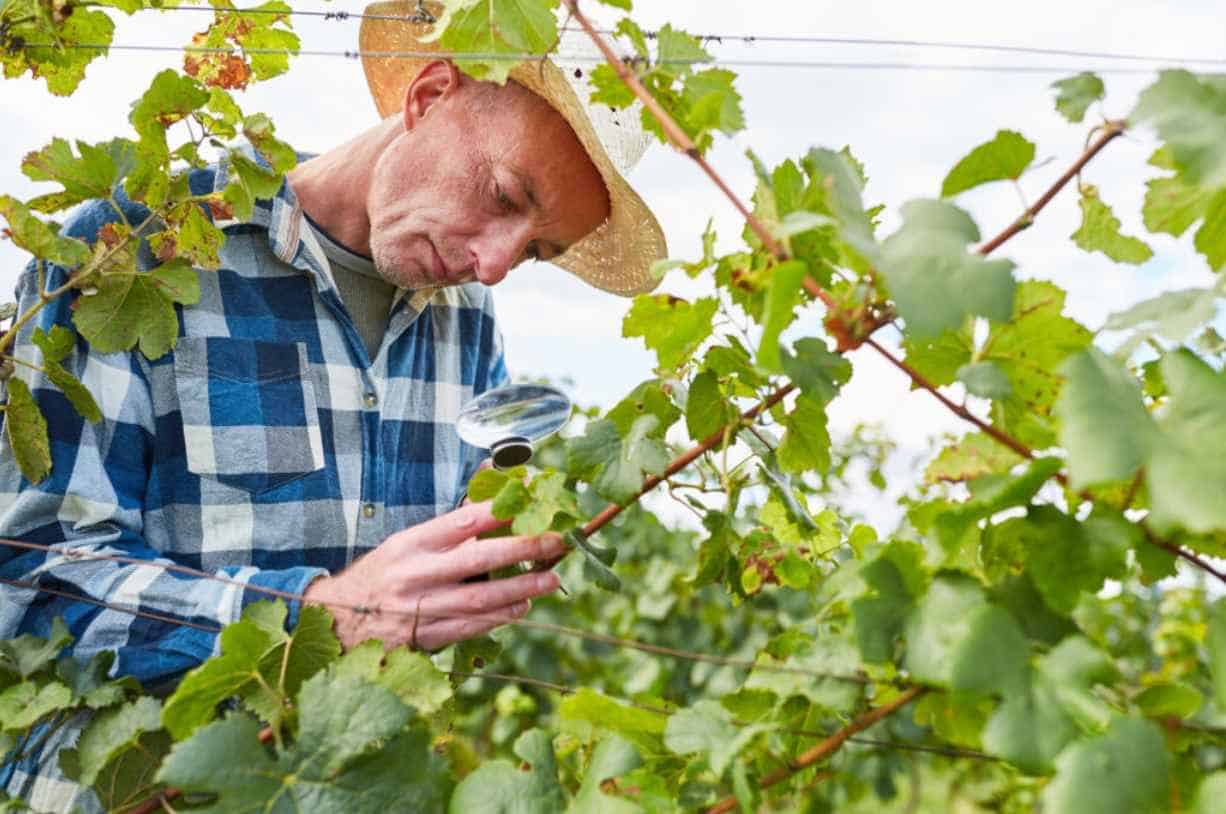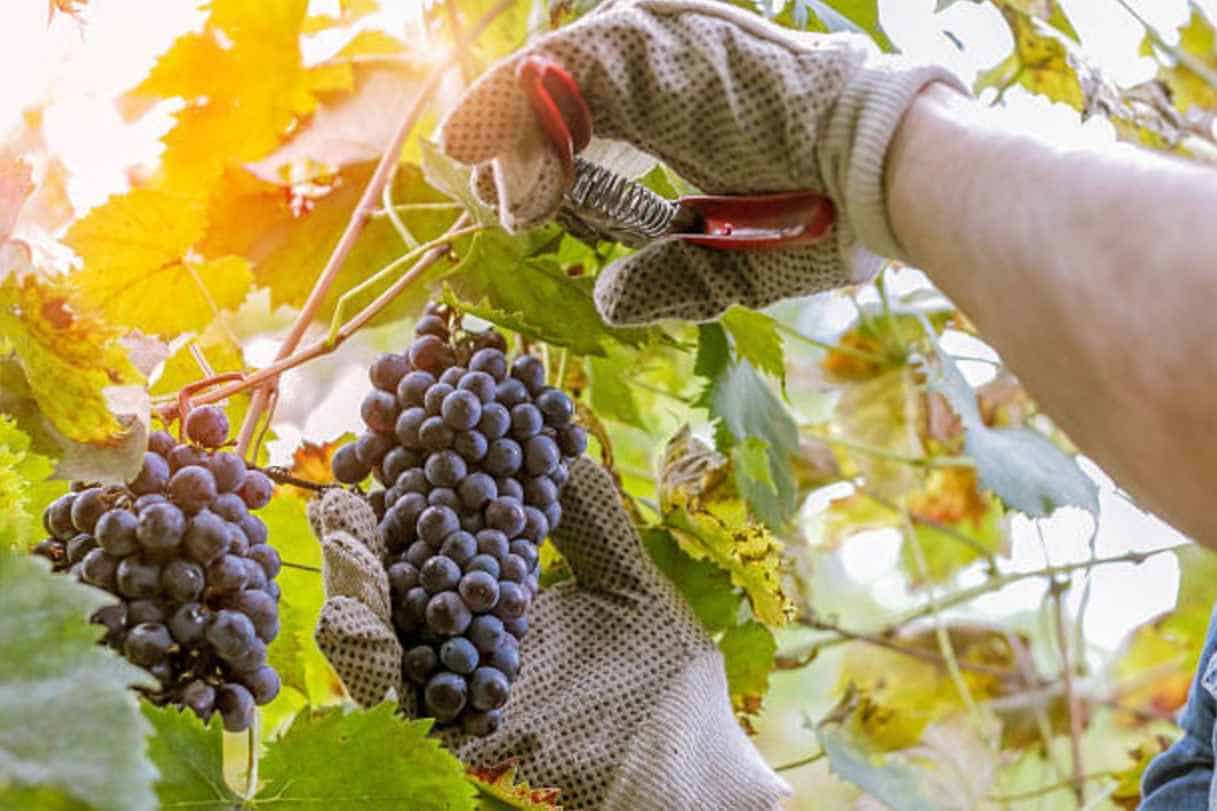Growing a plant is hard enough as it is. However, planting wine grapes can provide more challenges. Don’t worry! With this guide on how to grow your wine grapes, the process will be a lot smoother for sure!
| Planting Stage | Time Period | Step Summary |
| Choosing the Site | A Week to a Month | Choosing the right site for your grapes per climate, water, and soil type. |
| Selecting the Grape Variety | A Week to a Month
(Can be done by Choosing the Site) |
Knowing the proper grape variety for your purpose. |
| Preparing the Soil | A few weeks to a few Months | Preparing the soil to be the best for planting. |
| Planting the Grapevines | A few months to 3 years | Plans for planting the direction of the vines. |
| Supporting the Grapevines
|
A few weeks | Knowing the suited way to support the vines via trellis. |
| Maintaining Irrigation
|
Done gradually as the vines grow. | Irrigation methods and scheduling. |
| Monitoring for Pests and Diseases
|
Done gradually as the vines grow | Knowing the common grape pest and diseases along with the proper prevention. |
| Harvesting the Grapes
|
After three years after the planting | Harvesting methods (mechanical vs. hand)
|
I. Choosing the Site
Climate Temperature
When it comes to planting grapes, the climate temperature plays a crucial role in deciding whether your plant will produce high-quality fruit. The ideal range required ranges from 15-25°C during the growing season and can vary depending on climatic zones (such as Mediterranean or continental climates).
According to viticulture books like “The Science of Grapevines” by Markus Keller, daytimes that are too hot (>35°C) might lead to reduced photosynthesis affecting fruit development. Meanwhile frost snaps (< -5C°) could cause rapid damage leading not only to loss of yield
The Right Type of Soil
The type of soil in which you plant your grape vines can have a profound impact on both the quality and quantity of fruit produced. Soil types would specify not only water drainage abilities. But, also mineral nutrition absorption and pH balance within the fruits themselves later influence the crop’s distinctive characteristics/terroir.
- Sandy Soil: This type of soil has large pores hence allowing easy permeation. It may cause over drainage resulting in arid weather conditions or lesser nutrition. But, it can offer natural pest control.
- Clay Soils: These compact soils hold more water than other varieties, and potentially risk excess root rot issues and lessened aeration. It is mite-resistant due to the presence of copper.
- Loam Soils: Often referred to as the “gold standard” regarding ideal vineyard sites because these contain traits like organic nutrients and are resistant to pests.
- Limestone Terrains/Rocky Grounds: Bright acidic presence yielding fresh, lively taste notes, especially in cool climates.
Water Availability
As claimed by books like Dr. Richard Smart’s “Sunlight into Wine,” rain patterns need to be figured ahead of pre-vineyard planning. Too little rainfall can lead to drought or even slow vine death.
In extreme cases, excess rain may cause soil damage or pesky fungal disease buildup. This lowers leaf health and causes quicker fruit decay.
II. Selecting the Grape Variety
Grape Hardiness
Knowing their hardiness levels can make all the difference in growing wine grapes. Grapes are sensitive to extreme cold and heat, so you’ll want to choose varieties that can withstand your climate. It’s also vital that it can stand trellising to protect them from frost damage.
Here are some of the hardy grape varieties:
- Concord
- Niagara
- Catawba
- La Crescent
Disease Resistance
Some grape varieties, such as Marquette and Frontenac, can have good resistance to mildew and Botrytis. We’ll talk more about these grape diseases below.
Desire Wine quality
Each variety has unique features affecting the final wine bottle. You need to pick the best-suited option based on your own goals. Whether tannins, sugar content, or white vs. red grapes, it’s best to know what you want from planting grapes.
III. Preparing the Soil
- Soil testing: Grape types have varying nutrient needs based on their variety. So, it’s crucial to test soils regularly to specify which nutrients like nitrogen or phosphorus might be lacking.
- Fertilizers: Using commercial fertilizers produces sufficient results. However, organic ones boost long-term fertility with minimal risk for pollution than popular chemical cures.
- Soil tillage: Soil tillage is an integral part of vine control and involves several factors. It includes the depth of tilling and timing for optimal results. The goal is to hold soil structure while enabling root growth by easing compact soils. It’s only done when needed, or when the soil is sensitive to erosion. Shallow fallow tilling can benefit weed control around young vines without disturbing their delicate roots.
IV. Planting the Grapevines
Know When Is the Right Season
Many growers aim to complete planting by early June. It allows roots sufficient time to grow ahead of summer drought stress periods. However, late September-October can also be suitable depending on the soil and climate zone.
While the ideal planting season may vary based on location-specific factors such as climate or soil type, many experts suggest fall (late November) or early-to-mid spring.
Planting Orientation
Vine rows should be north-south to maximize sunlight, with a standard row-to-row distance between 7-9 feet. Tighter spacings and more vertical canopies, such as “hedgerow” style training systems, are optimized to accommodate various factors such as sunlight exposure and vine management.
Planting the Sapling
Grapes can be planted using seeds or other fitting grafts. Many growers mainly use stem cuttings that grow new shoots close to roots.
Plant with advised spacing ranging roughly six feet apart between plants leaning upon grape variety selection. Then, dig a hole deep enough (15 inches), then go deeper if needed until you reach ‘live’ layers.
V. Supporting the Grapevines
- Trellis Design: Oregon State University notes that it’s vital to have a well-designed trellising system for keeping healthy growth. It involves devising good designs from steel stakes/posts & galvanized wires. Which, mature vines can grow uprightly strained to these support systems horizontally as they develop.
- Tying the vine: Growers should tie young vines using plastic clips. For more organic ones, plant ties from jute twine around the base where bud break mainly occurs will do the trick. Not tying reduces buildup, which strains their fruit-bearing ability over time.
- Pruning the vine: Novice growers must first learn basic cane-pruning methods. What entails is cutting buds in early spring before any shoots reach full size.
VI. Maintaining Irrigation
Irrigation methods
- Drip irrigation is one widely used method where tubes or pipes with small holes disperse water directly at each plant’s root zone. It results in more targeted water use and avoids undue runoff to parts that do not need watering.
- The regulated deficit irrigation (RDI) technique relies on carefully directing water levels throughout the year to not overwater during periods when vines consume very little. RDI prevents excessive vigor without sacrificing yield quality. It also reduces the risk of fungal infections like powdery mildew by avoiding standing moisture on leaves.
- Other options include using sprinklers or flood systems lodged above ground. Which covers larger areas with efficient control settings assuring uniform delivery based on soil.
Irrigation scheduling
The all-around goal of irrigation scheduling is not only to aid with crop survival. But it also maximizes output quality by timing watering periods relying on different needs.
For instance, Iowa State University Extension notes the importance of choosing suitable irrigation systems. It’s dependent on aspects like root size and age of vines.
VII. Monitoring for Pests and Diseases
Common grape pests
Various pests can afflict a vineyard with varying degrees of impact on crop yield, many requiring prompt attention.
- Grape Phylloxera: Aphid that feeds off roots harming water uptake.
- Grape Berry Moth: Caterpillars targeting berries. It spoils fruits while reducing pulp weight.
Common grape diseases
Grapes are prone to weak links exposure factors affecting fungal growth, causing tissue damage, including common infection outbreaks such as:
- Powdery Mildew: Fungal spores colonizing leaf surfaces and attacking photosynthesis. It impedes the starch and increases the risk of extended ripening.
- Downy Mildew: Downy Mildew is an airborne disease revolving in humid and rain-prone regions that is caused by white-yellow spots on rich-green leaves.
- Botrytis: Also referred to as “Noble Rot,” affects grapes with excessive moisture/widely warm temp, which causes decay in berry skin surfaces.
Pest and Disease Management
Modern vintners widely adopt pest control systems globally to combat these issues, marking a shift toward preventive methods. You can use hardy grape varieties or insects that help combat these problems.
VIII. Harvesting the Grapes
First off, there are two main methods for harvesting: hand and mechanical.
Hand harvesting is the traditional method that uses skilled laborers who pick each grape bunch by hand. This is done to ensure the quality and ripeness of each grape individually.
Mechanical harvesting is a more modern method. It uses machines equipped with special arms or belts to comb through vines, quickly collecting every cluster of ripe fruit.
Conclusion
Growing your wine grapes can be both rewarding and hard. It may take time to perfect the art of growing vines that provide optimal fruit quality. But with patience and diligence (and this guide), it’s well within reach!
